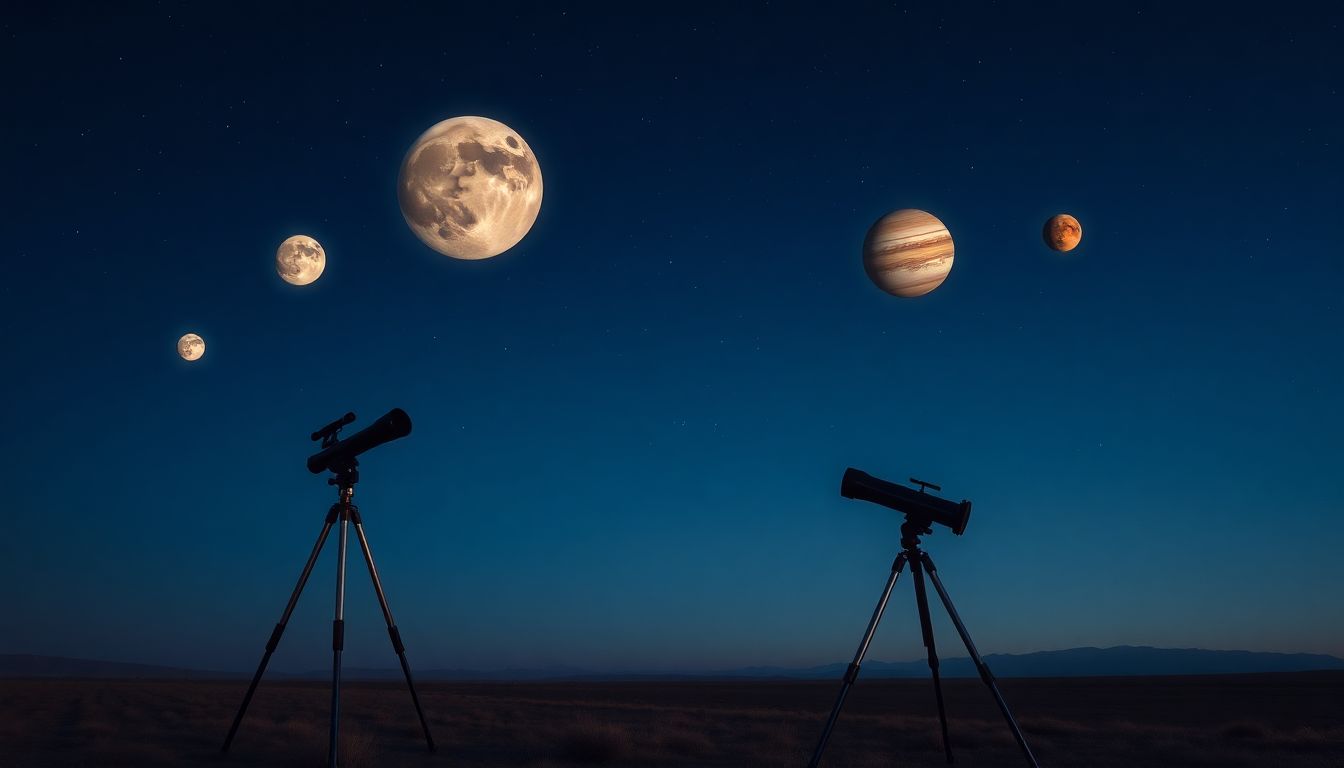
Top 5 Easiest Planets to Spot with a Small Telescope
Introduction
Finding planets beyond what your naked eye can see is incredibly exciting. With just a small telescope, you can unlock a whole new world in the night sky. Picking the right planets makes the experience easier and more fun for beginners. Some planets are easier to see because they’re bright, big, or have distinct features. Starting with these makes your stargazing journey smooth and rewarding. Amateur astronomy has never been more accessible, thanks to simple gear and clear guides.
Why Choose Small Telescopes for Planet Observation?
Equipment Overview
Small telescopes like refractors or compact reflectors are perfect for beginners. They usually have an aperture of 3-5 inches—more than enough for planet viewing. Magnification tools can be adjusted easily, helping you see planets clearly. A good rule is to choose a telescope with a wide field of view and decent power.
Advantages for Beginners
Small telescopes are lightweight and easy to carry around. They cost far less than large observatories, making them ideal for new astronomers. They’re simple to set up and quick to learn, so you spend less time fussing and more time exploring. These little scopes open up the sky for anyone wanting to see planets up close.
Criteria for Easy Planet Observation
Brightness and Size
Bright planets are easier to spot with a small telescope. Their apparent magnitude—a measure of how bright they look—limits which planets you can see without premium equipment. The larger a planet appears in your telescope, the easier it is to see surface details.
Orbital Position and Visibility Windows
Planets are best observed when they are closest to Earth or positioned in the sky at night. Their location relative to the Sun impacts their visibility—some are only visible during specific times of year or night. Checking planetary transit calendars can help you plan your stargazing nights.
Surface Features and Distinctiveness
Planets with notable features—like rings or visible moons—are easier to identify. Their surface markings can be seen with modest magnification, making the planet stand out in your telescope view.
The Top 5 Easiest Planets to Spot with a Small Telescope
Mercury
Why it’s easy to spot
Mercury is close to the Sun but can be seen just before sunrise or after sunset. Its phases resemble a tiny Moon, visible with small telescopes. Its brightness varies but often makes it stand out during twilight.
Observation tips
Look during the morning or evening when the sky is still dark but Mercury is visible. It’s best to find a location with an unobstructed horizon. Patience is key, as Mercury’s visibility window is short.
Venus
Why it’s easy to spot
Venus outshines every other planet in the sky and shines as a bright “star.” Its phases change, similar to the Moon, which you can see through a telescope. It’s usually visible just after sunset or before sunrise.
Observation tips
Watch for Venus during its “morning star” or “evening star” phases. Its dazzling brightness makes it impossible to miss, even for beginners. Use a star chart or app to track when Venus is visible from your location.
Jupiter
Why it’s easy to spot
Jupiter is the largest planet in our solar system, making it a favorite for small telescopes. Its cloud belts and four biggest moons—Io, Europa, Ganymede, and Callisto—are visible with basic gear. That makes it one of the easiest planets to observe.
Observation tips
Look for Jupiter when it’s high in the sky. The best time is when it’s closest to Earth, during opposition. Use a steady mount to see the cloud bands clearly. Watching the moons change positions is a special treat.
Mars
Why it’s easy to spot
Mars is famous for its reddish hue, which makes it stand out. When its orbit places it close to Earth—called opposition—it looks larger and brighter. Surface markings, like polar caps, can sometimes be seen through a small telescope.
Observation tips
Timing is everything. Mars is easiest to see during opposition, which happens roughly every 26 months. Look for the reddish glow and try to spot dark markings or polar caps as the planet grows larger.
Saturn
Why it’s easy to spot
Saturn’s iconic ring system is visible even with small telescopes. Its brightness makes it easy to find. When the rings are tilted fully open, they provide a stunning display that’s hard to miss.
Observation tips
Find Saturn when it’s near opposition or in a favorable position in the sky. The rings appear as a bright, distinct feature—an unmistakable sign you’ve found Saturn. Watching the rings shift as different views become visible is a joy.
Additional Tips for Amateur Planet Observation
- Use star charts, apps, or online tools to locate planets easily.
- Choose nights with dark skies and little moonlight for sharp views.
- Keep your telescope clean and properly aligned.
- Record your observations in a journal to track your progress and discoveries.
Conclusion
These five planets are the easiest for small telescope enthusiasts to spot. They stand out because of brightness, size, or unique features. Patience, good timing, and proper equipment turn beginners into confident stargazers. Remember, every night could bring a new discovery—whether it’s finding Venus shining brightly or watching Jupiter’s moons dance. So grab your telescope, learn the sky’s patterns, and enjoy exploring our cosmic neighborhood.
Get outside tonight. The planets are waiting to be explored!

